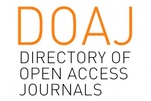The future of E-learning as an educational innovation: Factors influencing project success and failure.
DOI:
https://doi.org/10.17143/rbaad.v2i0.151Resumo
Este artigo apresenta uma revisão inicial da literatura de fatores críticos para o sucesso e fracasso de iniciativas de E-learning segundo o revelado pela experiência de pesquisadores e praticantes no EUA. Também apresenta uma análise breve do relativo sucesso de inovações tecnológicas educativas, vistas de uma perspectiva das teorias aceitas sobre a difusão de inovações na sociedade. Em alguns aspectos, muitas inovações tecnológicas anteriores seguiram uma trajetória não característica de aceitação, seguida por rejeição geral. Será este o futuro cenário para o E-learning como inovação? E se tais tendências aparecem no país pioneiro, como outros países que adotam um pouco mais tarde os processos de E-learning, como o Brasil, evitam estes erros?Downloads
Referências
Broadbent, B. (2001). How to Fail at E-Learning. E-learning magazine, January, 2001. http://www.e-learninghub.com/articles/How_to_fail_elearning.html
Clarke, D.J. (2002). E-Learning: Big Bang or Steady Evolution. Learning Technologies, January 2002. http://www.logilent.com/company/bigbang.pdf
Greenagel, F.L. (2002). The Illusion of E-Learning: why we are missing out on the promise of technology. Phoenix. AZ: League for Innovation in the Community College, White papers. http://www.league.org/publication/whitepapers/0802.html
Khan, B. H. (Ed.). (1997). Web-based instruction. Englewood Cliffs, NJ: Educational Technology Publications.
Khan, B. H. (Ed.). (2001). Web-based training. Englewood Cliffs, NJ: Educational Technology Publications.
Khan, B. H. (in press). E-learning QUICK checklist. Eskisehir, Turkey: Anadolu University Press.
Khan, B. H. (in press). E-learning strategies. Beijing, China: Beijing Normal University Press.
McGraw, K.L. (2001). E-Learning Strategy Equals Infrastructure. Learning Circuits, ASTD, June 2001. http://www.learningcircuits.org/2001/jun2001/mcgraw.html
Morrison, J and Khan, B. (2003). - The Global e-Learning Framework: An Interview with Badrul Khan. Technology Source, May/June 2003. http://ts.mivu.org/default.asp?show=article&id=1019
Phillips, V. (2002). Why does Corporate E-Learning Fail? Virtual University Gazette, June 2002. http://www.geteducated.com/vug/june02/vug0602.htm
Rogers, E. M. (1983). Diffusion of Innovations (3rd Edition). New York, NY: Free Press.
Romiszowski, (1981). Designing Instructional Systems: decision making in course planning and curriculum design. London, UK: Kogan Page.
Romiszowski (1974) Selection and Use of Instructional Media. London, UK: Kogan Page.
Tiffin, J. (1980). Educational Television: a Phoenix in Latin America? Programmed Learning and Educational Technology, Vol.17, No.4, November 1980 (pp257-61).
Wagner, E. (2000). Strategies for Leveraging Learning Objects. Powerpoint presentation delivered at the TechLearn2000 conference, the Masie Center. http://www.techlearn.net/layout/default.cfm?page=sessiondetail&session=1236
Zenger, J., & Uehlein, C. (2001). Why Blended Will Win. T+D Journal Vol.55, No.8, (pp 54-60).
Downloads
Publicado
Como Citar
Edição
Seção
Licença
Todos os artigos publicados na Revista Brasileira de Aprendizagem Aberta e a Distância (RBAAD) recebem a licença Creative Commons - Atribuição 4.0 Internacional (CC BY 4.0).
Todas as publicações subsequentes, completas ou parciais, deverão ser feitas com o reconhecimento, nas citações, da RBAAD como a editora original do artigo.



 .
.








